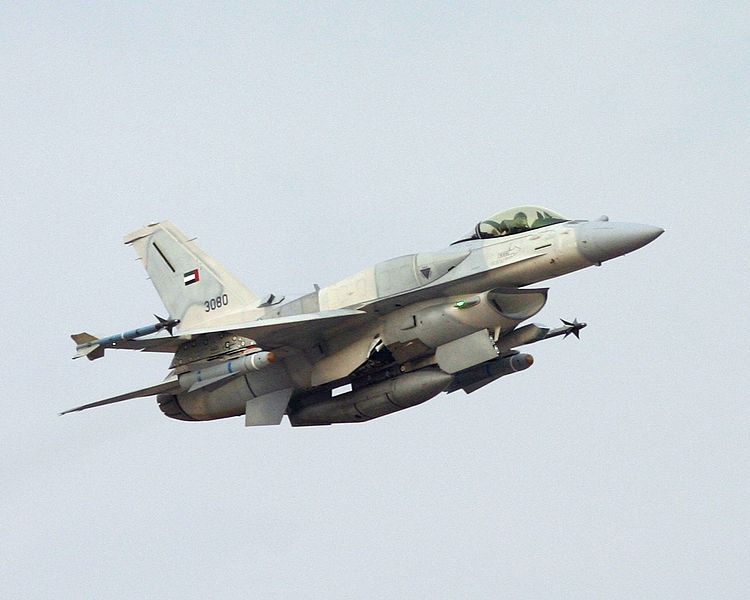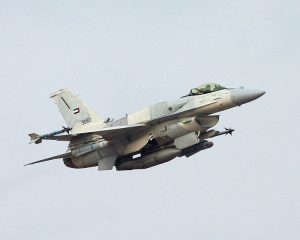Bayard & Holmes
~ Jay Holmes
For the last few years, military and foreign policy aficionados around the world, not to mention very excited governments and corporate accountants, have been following the Indian government’s fighter procurement plans.
The process has been more dramatic and colorful than the average major defense purchase. Given the profit potential of any contract to supply modern fighters to the Indian Air Force (“IAF”), we would expect fierce competition from fighter jet manufacturers accompanied by massive propaganda campaigns from both government and corporate sources. We would not be disappointed.
The technical aspects of the competition have been debated by millions of passionate aviation “experts.”
Unfortunately, most of those “experts” either have no experience in piloting or aerospace engineering, or they work for companies connected to the competition. My purpose in publishing this article is not to add to the technical and political debates. My hope is to consider some interesting geopolitical/geo-corporate questions that have arisen from the long and dramatic procurement process. My spellchecker is resisting the term “geocorporate,” but I fear that the time has come when the term is both fair and depressingly relevant.
The IAF wants a new fighter.
It wants a fighter that is better than their current hodgepodge mix of aircraft from a slew of countries and manufacturers. For both domestic and foreign political reasons, the IAF also wants guarantees of parts and weapons availability without interference from the governments where the aircraft is manufactured each time the political climate changes in those governments.
For domestic political reasons, the Indian government wants major technology transfer and local work cost offsets of 50%.
For those who are not acquainted with industry jargon, that means the Indian government wants the ability to use the same or similar technology to produce the same or similar products, and it wants half of the cost of production to be spent in India.
The serious competitors for India’s fighter deal were France’s Dassault Rafale, the Eurofighter Typhoon, and Sweden’s Gripen. Other competitors offered their products but were, justifiably, seen as dark horses in the race for the huge contract.
US Boeing half-heartedly offered the F-18 Super Hornet, but perhaps did so with the hope of eventually convincing the IAF to consider them for use on future Indian carriers. The F-18 would not seem to be ideally suited for the IAF’s particular requirements.
US Lockheed Martin offered the F-16 C/D. Given the age of the airframe design and India’s desire for a massive technology transfer, it seemed unlikely that India would choose the F-16. It didn’t.
Russia straight-facedly tried to offer up everything in their inventory, along with a few things not actually in their inventory.
Given the IAF’s torturous troubles in dealing with Russian aircraft companies Mikoyan and Sukhoi on previously purchased fighters, there seemed little chance of the IAF choosing a fighter from Russia. The IAF has been sold too many lemons over India’s decades of purchasing Russian military equipment, and the Russians have refused to uphold warranty promises. Russia may have saved money in the short term by screwing India on these deals, but in the process, it pretty well lost a customer.
The IAF has been pleased with the performance of the Dassault Mirage 2000s that they previously purchased from France.
The Mirages have performed well for it. Also, when the rest of the West embargoed weapons sales to India in response to nuclear weapons tests or conflicts with Pakistan and China, France continued to supply weapons and parts to India. Naturally, India has remembered this. Likewise, the IAF is confident that unless it starts bombing the very best restaurants and art museums in Paris, Dassault will remain willing to take their cash.
Without even considering technical arguments, the Swedish Gripen relies on critical parts from other nations, making it unlikely. Getting those nations to agree to a Swedish export of their technologies to India was going to be about as easy as getting all of France to switch to a Swedish cuisine diet. If you’ve ever eaten in Sweden, you will recognize this proposition as absurd humor.
Note to Swedish people: I like you. You are lovely people. Most of your food sucks.
But back to fighter planes…
The Eurofighter Typhoon might have met the technical requirements set forth by the IAF, but India would be at the mercy of the governments of Germany, the UK, and Italy for parts and weapons if they ever tried to do something crazy with those Eurofighters like perhaps fight with anyone. The Eurofighter, like the Grippen was a bad political choice.
In January 2012, to nobody’s real surprise, the Indian Government announced that the Dassault Rafale had won the competition for the huge contract of 126 multirole fighters.
It was a slam dunk for Dassault. Almost. As my grandma told me, the devil’s in the details.
Dassault was anxious to deliver the Rafales. The IAF was anxious to receive them. I was not going to hold my breath waiting for the first Rafale to be delivered to the IAF.
The small matters of price and warranties remained to be settled. Dassault vacillated on the price as India pressed for more technology transfer. The pricing started high, then got lower, then got higher again, then lower, etc. As the months and years passed, the first Rafale fighter was never delivered because the parties could never agree to details on price, warranty, and technology transfer. Unlike the average American tourist in Paris, the IAF was willing to argue about the bill.
Finally in March 2014, India and France announced that the first 18 aircraft would be delivered to India in flying condition – off the rack, so to speak – at a cost of $200 million + per fighter. Another 108 would be 70 percent built by HAL Corporation of India. The 18 seemed to me like a very high priced improbability, and building more with 70% construction by Hal in India struck me as more fanciful than home fusion generator trash disposal units.
In April of 2015, India indeed announced that the purchase had advanced to the long anticipated “Hell no, we won’t buy any” stage of the negotiations. No cash, no new fighters, nothing.
And then Lockheed Martin slipped in and knocked on the back door with a very interesting proposal.
Lockheed Martin offered to move its entire production of F-16s to India if India would upgrade the order to the F-16 Block 70 model.
Instead of technology transfer debates, Lockheed Martin will let India build the fighters on a Lockheed Martin system installed for less than $30 Million per fighter.
And as grandma would say, again, the devil is in the details.
Lockheed Martin can propose all they want, but the US government will have to completely agree to all the details of any transfer of F-16 technologies and production to India.
Many US allies fly the F-16.
Some fly newer, recently-built versions and will be flying them for a long time. In fact, without any new orders, Lockheed Martin will be busy turning out F-16s for at least another year to satisfy current orders. Neither Lockheed Martin nor the US government wants to aggravate these allies by telling them to get their parts from India.
The Pakistan Air Force flies F-16s.
For Pakistan, which is in a state of perpetual low level war and near-war with India, hating India is central to its dogma. How many parts will India send to Pakistan? Maybe a few nylon seat covers and some cool looking decals. That’s about it. In effect, Lockheed Martin is telling the Pakistan government to piss off.
The Lockheed Martin offer is not officially coming from the US government.
If John Kerry visited Pakistan tomorrow, he would swear to them that he loves Pakistan, roots for the Pakistani national cricket team, loves Pakistani food, and that some of his best friends are Pakistanis. John would not believe any of it, and neither would anyone in Pakistan.
Though the Lockheed Martin proposal has not yet received US government approval, it’s hard to believe that the Lockheed Martin tail is wagging the US government dog.
The Lockheed Martin proposal to India represents a major shift in US foreign policy toward both India and Pakistan. Is the US finally accepting that Pakistan has never been and never will be anything like an ally? Are we offering a closer relationship to India?
My guess is that Lockheed Martin and India will not conclude the deal in its current form. At this point, the proposal can be withdrawn for any number of reasons, but the message to both India and Pakistan will stand. India might not take the Lockheed Martin offer seriously, but Pakistan must.


Recent Comments